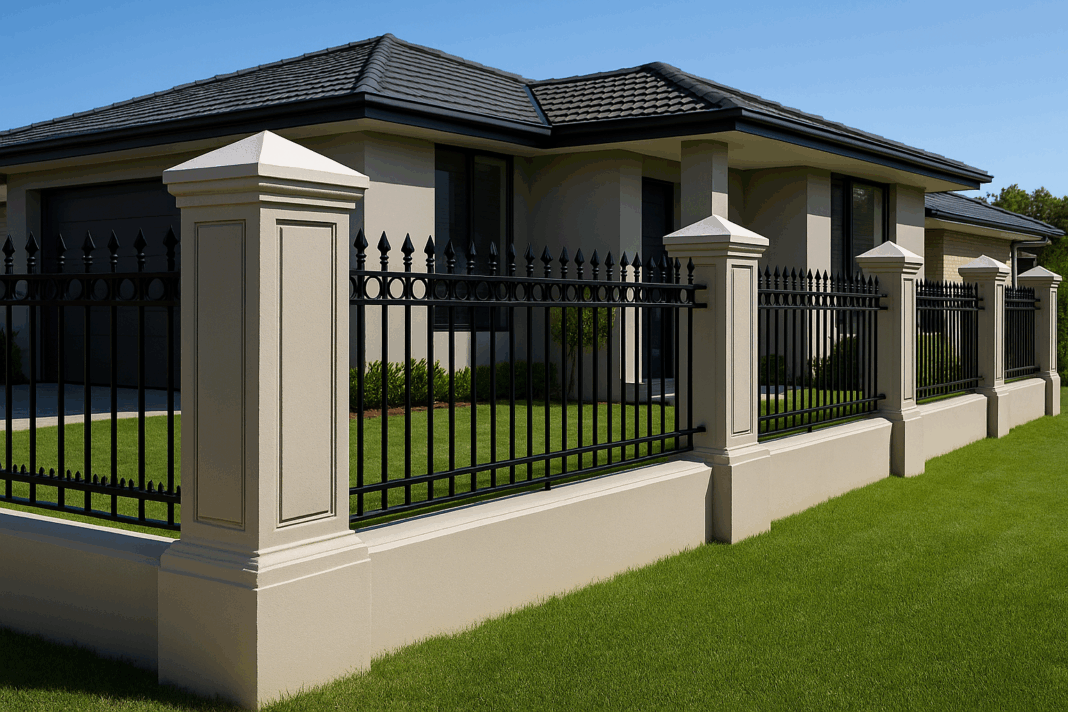When people talk about fencing, they usually get caught up in styles, colours, and panel choices. What they often forget is the real backbone of any fence, the posts. These are what keep everything upright, secure, and standing tall when the wind picks up. If your posts aren’t solid, it won’t matter how nice the fence looks.
It doesn’t matter if you’re using timber, composite fence posts, or concrete.
Here’s a simple guide on how to install fence posts that will stay put for years.
Step 1: Mark Your Post Locations
Start by deciding exactly where your posts need to go. The corner posts come first. Once they’re marked, use a tape measure to work out the spaces in between.
Most fences have posts spaced around two metres apart. This gives enough support for the panels without overloading the posts. If you spread them too far, the panels might sag. Put them too close and you’ll spend more time digging and more money on materials.
Step 2: Dig the Right Hole
This step is simple but easy to get wrong. Your post needs to be deep enough in the ground to stand firm. A good rule is to bury at least one-third of the post’s length.
So, if your post is two and a half metres long, you’ll want about eighty centimetres of it underground. Don’t forget the width of the hole either. Make it around three times wider than the post itself.
Step 3: Pick the Right Post
- Composite fence posts are a good pick if you want something that won’t rot or crack. They’re great for harsh weather and need hardly any upkeep.
- Concrete fence posts are the heavyweights of the fencing world. They can handle just about anything and are often used where you want serious strength and no movement.
- Timber posts are the traditional choice. They look great, but will need more care over time.
If you’re unsure, it’s worth checking out some of the benefits of fence posts as well, which we will cover as we go.
Step 4: Set the Post in Place
Place your first post into the hole, making sure it sits at the height you’re aiming for. If it’s a bit tall, you can always trim the top once everything’s set.
You need to grab a post level and check both of the two given sides. You shouldn’t try guessing it by eye.
Step 5: Secure the Post
If You’re Installing Timber or Composite Fence Posts
- Start by adding about ten centimetres of gravel at the bottom of the hole. This helps with drainage and stops water from sitting around the post.
- Mix up your concrete. If you’re using a bagged post mix, follow the directions on the pack.
- Pour the concrete directly around the post, filling the hole right up.
- Before the concrete begins to set, check the post with a level on both sides. Make sure it’s straight while you still have the chance to adjust.
- Once everything looks good, leave the concrete to harden. Give it at least 24 hours before attaching any panels or rails.
If You’re Working with Concrete Fence Posts
- Start with gravel at the bottom of the hole, just like with timber or composite posts. This keeps water from pooling at the base.
- Be ready for some heavy lifting. Concrete posts are solid and usually need more than one person to move and position safely.
- Set the post in place and check it with a level to ensure that the post is in the proper position and straight.
- Pour the concrete carefully around the post, filling up the space.
- Let the concrete cure completely before installing any fence panels or gates.
Step 6: Backfill and Wrap Up
After the concrete has fully set, fill in the rest of the dug hole with soil or gravel and pack it down firmly. This helps lock the post in place.
If you’ve used timber, it’s worth sealing around the base with bitumen or fitting a post protector. That way, moisture from the ground won’t start rotting the wood too soon.
Why Getting It Right Matters
Your fence posts aren’t just holding up panels. They’re the support for the entire fence. If you set them right from the start, you’ll save yourself a world of trouble later—no leaning fences, no snapped posts, and no surprise repairs after a storm.
And if you’re still deciding between timber, composite fence posts, or concrete fence posts, you should have a look at the different benefits of fence posts before you buy. The same attention to detail applies when selecting Balustrade & Posts for your outdoor areas—quality and proper installation make all the difference.
Good posts are what make a good fence. Take the time to do it right, and you’ll only have to do it once. Make sure you follow all the steps that are given to you—don’t miss out on any of these.



